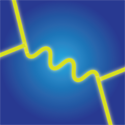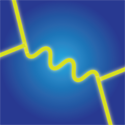The narrowing search for the Higgs boson
In the Standard Model of particle physics, mass arises from spontaneous symmetry breaking. A byproduct of this mechanism—and as such, a long-sought keystone of the Standard Model—is a particle called the Higgs boson.
Except for its mass, the properties of the Higgs boson are predicted by the Standard Model. Experimental searches over the years have gradually pushed the lower bound up on the mass of the Higgs boson to . The CDF and D0 collaborations at Fermilab have been searching in the region above this threshold, but they do not yet have a sufficient number of collisions to see the Higgs boson—unless the cross section for producing this particle in a collision is larger than the Standard Model predicts.
In a paper appearing in Physical Review Letters the CDF collaboration reports a search for the Higgs boson, via its expected decay to two bosons. Based on a large amount of data (3 inverse femtobarns), they see no sign of the Higgs boson, and constrain its production cross section to less than ten times the prediction of the Standard Model. In fact, for the resonance energy of twice the mass, or , they put an upper bound on the cross section for the decay to be less than twice the Standard Model prediction. It will be interesting to see what constraints or evidence Fermilab can present before the Large Hadron Collider conducts its own Higgs boson searches in the next few years. – Robert Garisto





